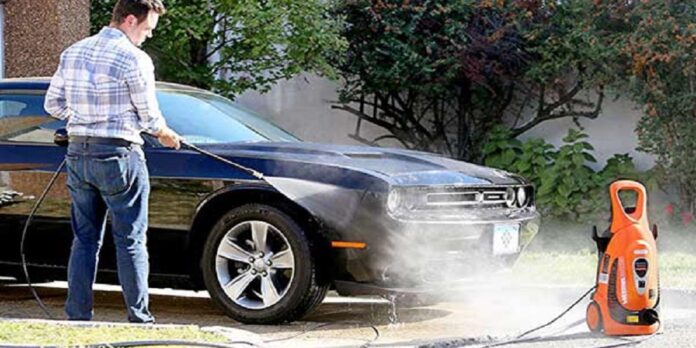There are many different causes of low water pressure in a pressure washer. Some of these problems can be caused by a number of different things, including a faulty garden hose connected to the pump’s inlet. Here are some tips for troubleshooting this issue.
Check if the regulating knob is fully open
If you are experiencing low water pressure in your pressure washer, you might be experiencing an inadequate supply of water. You can check if your hoses are properly attached by opening up the water faucet. If not, make sure to check them for debris. You can also check the nozzle itself. If it is clogged with debris, you can clean it and replace it. Ensure that the water supply valve is open.
If you are not getting enough water pressure, you may need to turn the meter valve. This valve is usually located in the house near the main city supply pipe, or outdoors if it is in a warm climate. To turn it fully open, turn the handle counterclockwise or parallel to the direction of the pipe. In case of low water pressure in pressure washers, you may also need to turn the ball valve handle.
Check if the nozzle holder head is in the correct position
If you notice that your pressure washer is delivering low water pressure, it’s likely that the nozzle holder head is out of position. This can be caused by a number of problems, including improperly adjusted nozzles. It may also be the result of a worn regulator, which can cause the water pressure to drop. To fix this problem, check the pressure washer’s user manual to see where to adjust the nozzle holder head.
Check if the unloader valve is faulty
A faulty unloader valve can cause a significant decrease in water pressure, so you should back off the unloader to reduce the pressure and bypass valuable water. This is particularly important if you are working from a ladder, because the trapped pressure can cause a spike in water pressure and be dangerous. Alternatively, a faulty unloader valve can cause a large decrease in water pressure and change the spray pattern.
A faulty unloader valve can result in a lack of water pressure, and should be replaced if necessary. To check if it is faulty, unscrew the unloader valve. If the valve does not have the proper clearance, a leaky hose or a broken valve will allow air to enter the pressure washer. If you notice any leakage in the hose or gun, replace it. You can also adjust the unloader spring to increase the pressure. If you are unable to perform this maintenance yourself, you should take your pressure washer to a professional shop. Otherwise, your washer may be experiencing low pressure problems because it is not adjusted properly.
Check the inline filter
One of the common causes of low water pressure in pressure washers is a dirty pump. Over time, the pump will collect dirt and minerals that block the water flow normally. To solve this problem, you should check the inline filter. If the filter is dirty, you can clean it using an air blow. Clean the pressure pump frequently to prevent damage. Check the inline filter on your pressure washer if it’s clogged with dirt and debris.
Check the hose
Another cause of low water pressure in pressure washers is a clogged hose. The hose should have a diameter of 3/4 inches. In some cases, the hose may have an incompatible hose with the washer. Before you replace the hose, check the size of the hose to ensure it matches the dimensions specified in the manual. Another possible cause of low water pressure is a faulty unloader valve. In such cases, the pressure may be too high or too low, or there may be a blockage.
Conclusion
If you are noticing that your pressure washer is not working as efficiently as it used to, then it’s likely that one of the above issues is the cause. By troubleshooting and checking each component, you can quickly identify the problem and take steps to fix it. Once you have resolved the issue, your pressure washer will be back to working at full capacity.












